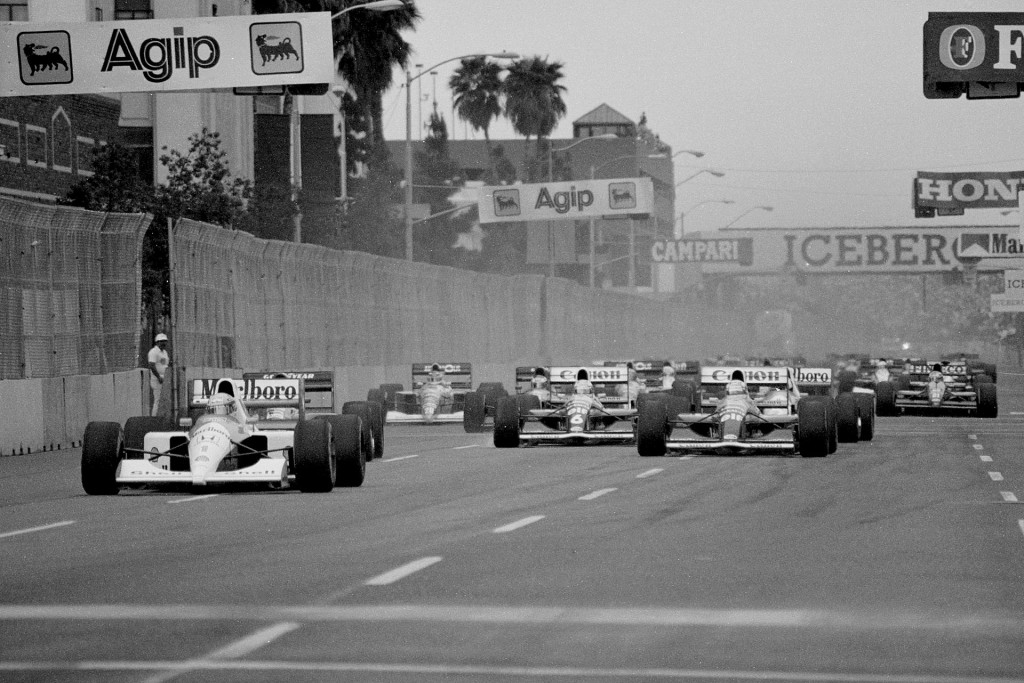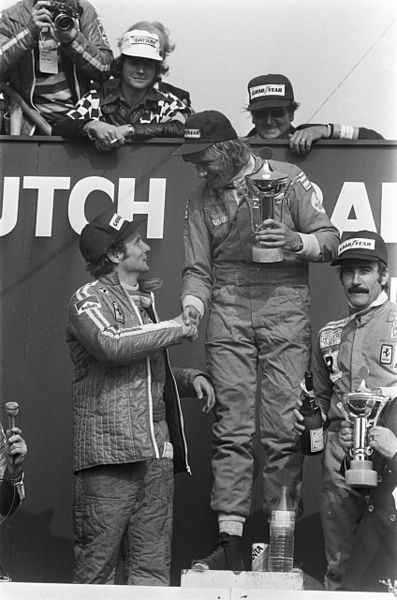If I ever happen to have an accident that eventually costs me my life, I hope it is in one go. I would not like to be in a wheelchair. I would not like to be in a hospital suffering from whatever injury it was. If I’m going to live, I want to live fully, very intensely, because I am an intense person. It would ruin my life if I had to live partially. – Ayrton Senna
This year marks the 20th anniversary of the death of Ayrton Senna, arguably the greatest racing driver the world has ever seen. Senna and many other Formula One drivers retain a near-mythical image of defying death while clocking blistering sector times, in fuel-rigged vehicles occasionally referred to as “bombs on wheels”. Rule revisions, car improvements and other technological advances have come a long way in improving the overall safety of today’s F1 drivers, yet recent accidents keep reminding us of the dangers persistent in the sport.
While Lewis Hamilton clinched his second World Driver’s Championship a week ago in Abu Dhabi, fellow F1 driver Jules Bianchi was quietly entering his seventh week of post-crash recovery in a hospital in Nice. During the rain-soaked Japanese Grand Prix in early October, Bianchi ran off track under the slippery conditions and collided with a tractor crane at an impact speed of over 200km/h. The head injuries sustained by the Frenchman called for weeks of artificially induced coma and only time will tell whether he will recover for a comeback in Formula One.
Bianchi’s horrific crash is only the latest in an unforgivingly long list of accidents which have accompanied the iconic motorsport throughout its turbulent history. The events surrounding Ayrton Senna’s death during the “Black Weekend” of the 1994 Imola Grand Prix were particularly poignant. Only days prior to the fatal race, Senna – a three-time world champion by then – had declared that his abysmal season debut in Williams (two DNFs in two races) would be finally purged and turned into a victory in Imola.
Tragedy would already strike during Saturday’s qualifying session, when Austrian driver Roland Ratzenberger crashed fatally after his front wing collapsed in the middle of a hot lap. On Sunday, Senna was leading the race when his Williams suffered a mechanical failure, losing control at the notorious Tamburello corner and ultimately crashing into a concrete barrier. The flying car debris fractured his skull, and the Brazilian was soon pronounced clinically dead. It was later revealed that Senna had an Austrian flag in his cockpit, which he intended to raise in honor of Ratzenberger after the race. To this day, Ratzenberger and Senna remain the last racers to have died in an F1 car.
Filmmakers have been recently addressing the bipolar nature of F1, in which safety concerns are seemingly contrasted by drivers’ and constructors’ determinations to build the fastest car possible. The selection below provides an engrossing combination of documents and dramatizations which ought to inform and entertain anyone with a penchant for sports thrills and human drama – prior knowledge of Formula One not needed!
1: Life on the Limit (documentary, 2013)
If you wish to brush up on the historical evolution of the sport, look no further than Paul Crowder’s exhaustive documentary covering the period between the maiden season in 1950 and the modern facets of F1 today. The film opens with the first lap of the 1996 Australian Grand Prix, during which Martin Brundle’s Jordan was demolished beyond recognition after barrel rolling in the air and splitting in two at ground impact. Much to everyone’s disbelief, Brundle emerged out of the wreckage completely unscathed. Red flags were waved to indicate that the session had been stopped. What does the shaken Brit do at this point? What any driver would have done: he sprints back to the paddock, tells the chief of the medical team which day it is (to prove he has not gone funny in the noggin) and hops into a spare car for the restart.
The anecdote of Brundle’s near-death moment sets the tone for the rest of the film, which explores the ways in which F1 pushed the limits of power, aerodynamics and the lunacy of its drivers, until the risks, dangers and losses became too grievous to be ignored. The first superstar of the sport, Juan Manuel Fangio, was commended not only for his five World Driver’s Championships during the 50s, but also for actually surviving his career alive. The film also highlights the consequences of doubling the engine size during the late 60s, and how the development of downforce-inducing wings increased corner speeds with a bitter human cost. To balance out the grim parts, there are also endearing moments of comradery and loyalty; it is for instance revealed that many wives and girlfriends of the older era helped their racing counterparts with the lap timing. Oh, and Michael Fassbender does a good job as the monotonously sexy narrator.
Rush (drama, 2013)
Ron Howard’s gripping film depicts the legendary rivalry between the meticulous Niki Lauda and playboy daredevil James Hunt. Hailed as both a hero and villain throughout his career, Lauda fought tooth and nail in and out of the cockpit, while the flamboyant Hunt built a reputation by being a serial womanizer and the guy who would throw up as part of his race preparation. And when these would-be champs were pitted against each other on the tarmac, it was all-out racing, bar none. The film opens with a wonderful shot of Lauda (played by Daniel Brühl) staring at the cloudy sky before the start of the 1976 German Grand Prix, a race which would change his life and set stage for the most breathtaking championship showdown in F1 history.
For the uninitiated, some of the twists and turns might seem too good to be true, but rest assured that most of the depictions in the film really did take place. “Rush” balances well between its light-hearted and heart-pounding moments, and delivers an engaging account of what it took to become world champion during one of the deadliest eras in the sport. Ron Howard demonstrates his prowess for sniffing out a great story in real life events, enforcing the age-old wisdom of fact being stranger than fiction.
Senna (documentary, 2010)
Ayrton Senna’s legacy as a sports icon can perhaps be best summed by the fact that the president of Brazil declared three days of national mourning after his demise in Imola. His controversial career has been carefully scrutinized ever since, but never as stupendously as in Asif Kaspadia’s appraised documentary. “Senna” phases the narration of its interviewees into the background, and focuses almost solely on video footage spanning the Brazilian’s 10-year career in F1, displaying the full range of talent, speed, ruthlessness and resolve which made him the best of the lot. The greatest merit of the film is its sheer ability to evoke a life-like picture of Senna, almost to the point where you forget that he was not involved in the actual production.
I firmly believe that “Senna” is not only the quintessential sports film, but also one of the greatest biographical works ever created. If you are planning on watching just one F1 movie during your lifetime, make it this one.



